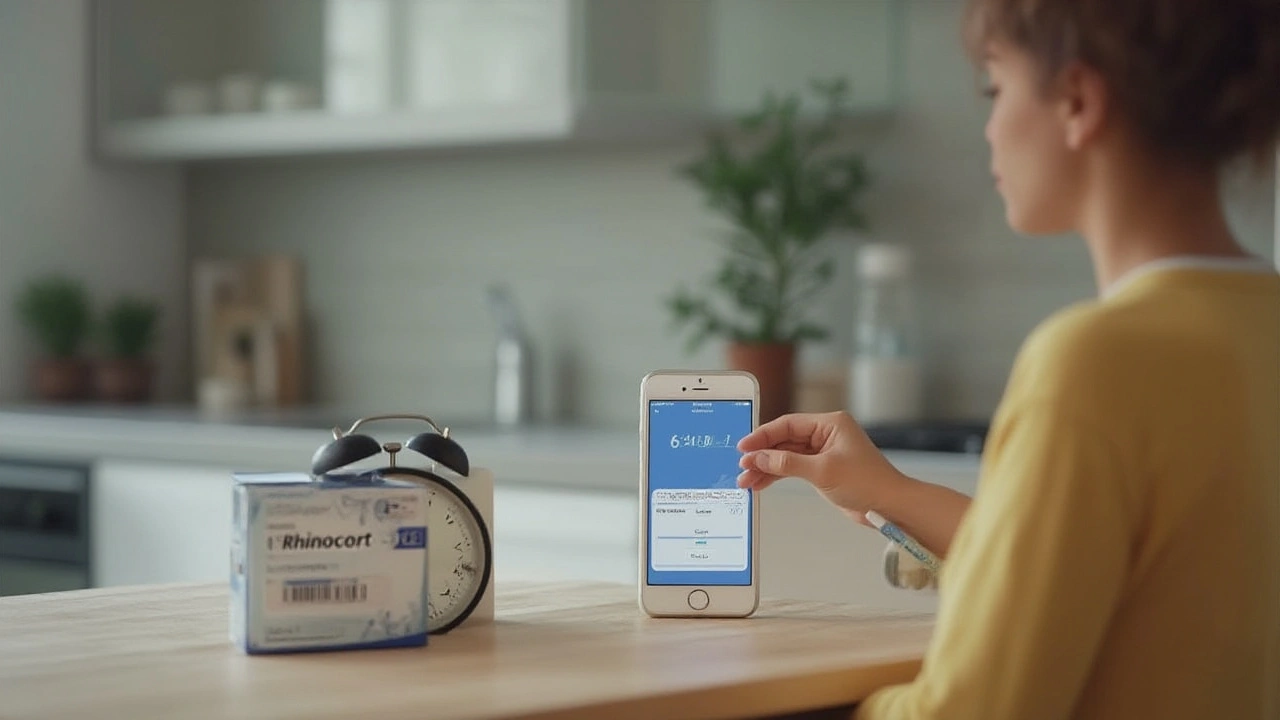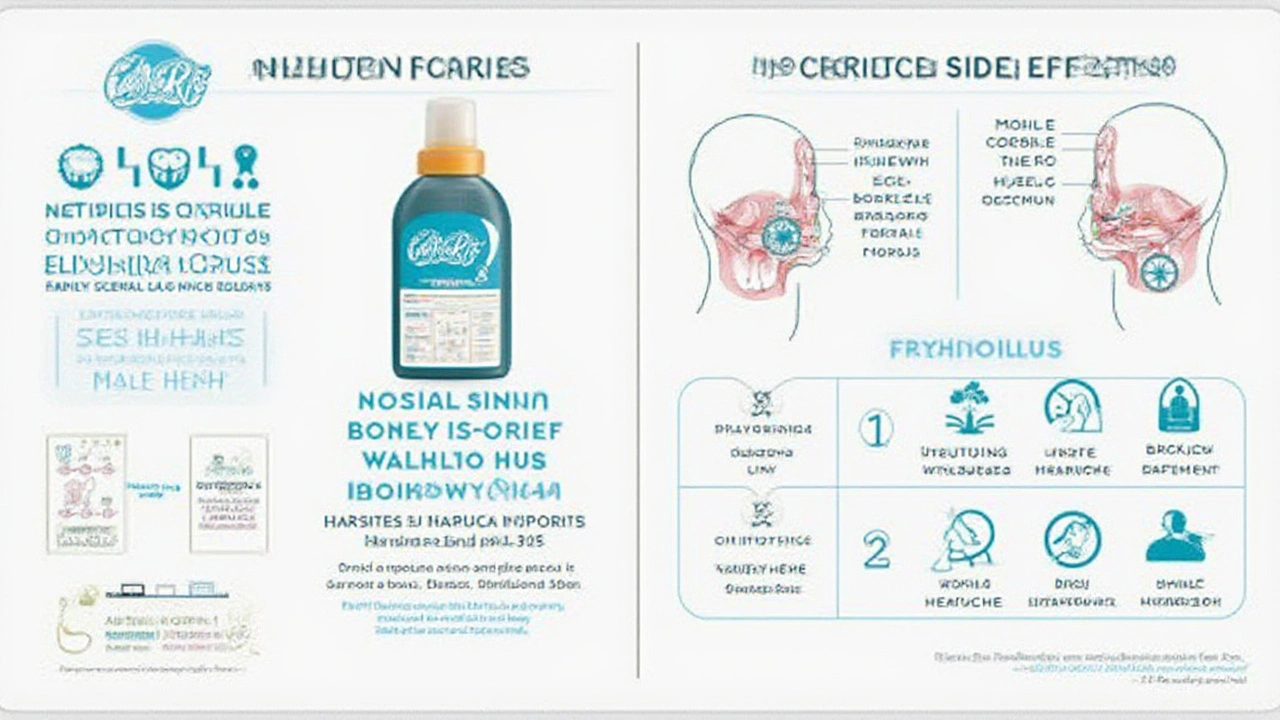Hay fever season is brutal right now. You wake up with a stuffy nose, your eyes are puffy, and you wonder if you should just live in a bubble until August. If you're someone who gets wrecked by pollen, dust, or pet dander, you've probably heard of Rhinocort. It's not just another bottle in the allergy aisle—there’s a reason why pharmacists and doctors actually recommend it when you say, "I can't function during spring!"
What Exactly Is Rhinocort and How Does It Work?
Rhinocort goes by the generic name budesonide. We're talking about a nasal spray that's part of the corticosteroid group—not to be confused with the steroids you might see in sports headlines. Unlike those dreamy decongestants that leave you jittery, budesonide’s job is to cool down inflammation right at the source. So instead of drying out your nose, it tells your immune system to chill out and stop the waterfall. Originally launched over 30 years ago, Rhinocort made the World Health Organization’s List of Essential Medicines, which is kind of a big deal. It's approved by the FDA for both prescription and over-the-counter use, making it one of the more trusted (and studied) nasal sprays available.
Your stuffiness comes from inflammation. When your body meets an allergen, it says, "That's the enemy!" and sends white blood cells and histamine to attack. That causes swelling, itching, and runny gunk. Rhinocort calms that war. It does this by blocking the inflammatory chemicals and keeping blood vessels from leaking. There's an actual medical term for this—"antiphlogistic action"—but you won't see that on the label.
It's not an instant fix, though. One major mistake people make: expecting it to work within five minutes like a Sudafed tablet. Most folks need to use Rhinocort daily, for several days, before seeing big results. According to clinical studies, significant symptom relief usually kicks in after the second or third day, and sometimes maximum benefit takes up to two weeks. If you're patient, you'll likely see a big reduction in that endless sneezing.
How to Use Rhinocort: Tips for Getting the Most Out of It
Using a nasal spray seems easy, but it'd surprise you how many people waste half the spray or end up swallowing most of it. Here’s how to use Rhinocort the right way if you want your allergies to ease up—and your wallet not to suffer from missed doses.
- First, always shake the bottle to mix the medication well.
- Blow your nose gently beforehand. You want to clear the passage so the medicine can stick to the lining.
- Prime the pump the first time or if you haven’t used it for a while. That usually means spraying a few times into the air until it’s a fine mist.
- Keep your head upright, insert the nozzle into one nostril, and point it slightly toward the outside (not straight up, not toward the opposite nostril).
- Press down on the pump while gently breathing in through your nose—just once per nostril if you're starting.
- Try not to sniff too hard or tilt your head back; otherwise, you’ll taste it in the back of your throat. It's not a pleasant flavor, trust me.
- Wipe the nozzle after each use, and re-cap it properly to keep it clean.
Adults and children over six typically start with one spray per nostril, once daily. That’s about 64 micrograms per spray. Kids ages 6 to 12 should stick to the lower dose, and only with adult supervision. If you're thinking about using it for your toddler, that's a hard no unless your pediatrician gives the green light.
Here’s a surprisingly common mistake—people double up on nasal sprays (like Rhinocort plus another steroid sprayer, or Rhinocort and Afrin together). Sure, you're desperate for breathing room, but this can lead to nosebleeds or even damage the inside of your nose. Stick to one prescription, and always talk to your doctor before experimenting.

What Makes Rhinocort Stand Out?
You’ll notice a sea of allergy options at the store. Antihistamines like loratadine, other steroid sprays like Flonase, and decongestants that promise miracles. So why choose Rhinocort?
That’s not a rhetorical question. Budesonide, the active ingredient in Rhinocort, has a unique structure that means lower absorption into the bloodstream compared to similar sprays. This helps it do its work in your nose without spreading around your body and causing lots of side effects. In fact, studies show that less than 34% of the dose gets absorbed systemically when you use it as directed. That’s good news because it lowers the risk of systemic steroid side effects.
Allergy experts point out that Rhinocort causes fewer issues with smell and taste changes versus sprays like Flonase or Nasonex. One 2023 study compared common nasal steroids and found budesonide had the lowest impact on sense of smell after four weeks of use. Plus, for folks with sensitive noses (hello, me), Rhinocort has no added fragrance or unnecessary preservatives—which makes a big difference if your nasal lining gets irritated easily.
| Nasal Spray | Active Ingredient | Preservative-Free | Average Systemic Absorption |
|---|---|---|---|
| Rhinocort | Budesonide | Yes | ~34% |
| Flonase | Fluticasone | No | ~17% |
| Nasonex | Mometasone | Yes | <1% |
If you have persistent allergic rhinitis (that means non-stop symptoms, almost daily), mainstream guidelines actually recommend using a corticosteroid nasal spray every day for weeks or even months. The trick is consistency. I know it feels pointless squirting stuff up your nose if you’re already stuffed up, but it’s all about managing inflammation over time—not just instant symptom relief.
If you're looking for seasonal allergy relief but worry about side effects, you might actually prefer Rhinocort to other steroids since it’s one of the gentler options available. Plus, because it’s safe for long-term use (when used properly), people with chronic sinus issues often rely on it for months at a time with a doctor’s guidance.
Potential Side Effects and What to Watch For
No medicine is perfect, and even the gentlest nasal sprays like Rhinocort have risks and annoyances. So what’s on the list? Most people tolerate budesonide with only mild nose dryness or a light burning sensation that disappears quickly. But there are some things you should keep an eye out for.
- Nosebleeds are the most common side effect. This usually happens if you aim the spray directly at your septum (the wall in the middle of your nose) or use it more than recommended.
- Some people notice a sore throat, headache, minor coughing, or maybe a strange taste right after spraying.
- It’s rare, but long-term high doses could thin out your nasal tissue or even cause tiny holes in the septum. Yeah, that sounds terrifying, so always follow prescribed doses.
- If you notice white patches in your nose, that's a sign of a yeast infection called thrush; rare, but possible, especially if your immune system is weak.
For kids, the concern is that super long-term use of any corticosteroid (even locally in the nose) could impact growth. There was a 2018 study that followed kids using budesonide sprays for several years, and while the effect was tiny, it’s something doctors take seriously. So, regular growth checks are suggested for kids who need daily use.
People with chronic health problems like glaucoma, cataracts, or recent nasal surgery should also be extra cautious. Budesonide might (very rarely) make glaucoma worse, so if you notice vision changes or eye pain, check with your doctor quickly.
There’s always the "what if I use this with other medication?" worry. Most of the time, Rhinocort plays pretty friendly with other allergy treatments, but if you're using other steroids (even inhalers for asthma), check with your doc so you don’t double-dose yourself. If you do ever feel dizzy, get nosebleeds that won’t stop, or have trouble breathing, stop and talk to your doctor right away.

Practical Advice for Living with Allergies (and Rhinocort in Your Routine)
If you want to get the most from Rhinocort, pair it with some simple lifestyle habits. Keep your home as allergen-free as possible. For me, that means vacuuming up cat hair from Ludo every few days, changing air filters, and keeping windows closed during high pollen days. You’d be amazed how much of a difference these basics make when you’re also using a nasal spray.
Try to use Rhinocort at the same time each day—habit matters for allergy meds. If you forget a dose, just skip it and pick up where you left off. Don’t double up, and don’t overuse “as needed”—daily consistency wins the war, not a sudden blitz attack during a flare-up.
If you ever find yourself needing other allergy remedies (like eye drops or oral antihistamines), space them out. Rhinocort doesn’t usually interact with those, but it’s good to let your nose rest a bit in between. Drinking plenty of water can help thin mucus and soothe your nose, too. Nobody ever mentions this, but using a saline rinse before your Rhinocort spray can clear out allergens and help the medicine reach exactly where it’s needed.
Keep an eye on the bottle’s counter if yours has one—a lot of folks spray empty air and wonder why nothing’s happening. And always store the bottle upright, away from crazy hot or cold spots (so, not your car or a sunny windowsill).
You don’t win an award for “fastest symptom relief,” but you do get real results by letting the medication build up over a week or two. Most people who stick with it notice their eyes stop itching, breathing gets easier at night, and morning headaches ease up. You can always talk to your pharmacist for questions—they’ve seen every allergy fail and success story out there.
And remember: if your “allergies” keep getting worse or don’t respond to Rhinocort, it’s worth checking in with a doctor to make sure there’s not something else going on. Sometimes sinus infections, polyps, or even non-allergic rhinitis can look like regular hay fever but need a totally different plan.
Dealing with allergies never feels fair, but with the right info and a solid medicine like Rhinocort, you can avoid hiding indoors until next season. Trust me, your nose—and your sleep—will thank you.

Mike Rothschild
July 13, 2025 AT 17:31Also, saline rinse before spraying? Game changer. Don't skip that step.
Ron Prince
July 14, 2025 AT 12:26Sarah McCabe
July 15, 2025 AT 16:20King Splinter
July 15, 2025 AT 17:32Kristy Sanchez
July 16, 2025 AT 02:43Michael Friend
July 16, 2025 AT 09:21Jerrod Davis
July 17, 2025 AT 10:13Dominic Fuchs
July 18, 2025 AT 11:18Asbury (Ash) Taylor
July 19, 2025 AT 04:28Kenneth Lewis
July 21, 2025 AT 02:13Jim Daly
July 21, 2025 AT 13:11Tionne Myles-Smith
July 21, 2025 AT 21:09Leigh Guerra-Paz
July 22, 2025 AT 02:20Jordyn Holland
July 22, 2025 AT 12:43Jasper Arboladura
July 24, 2025 AT 10:48Joanne Beriña
July 24, 2025 AT 22:35ABHISHEK NAHARIA
July 25, 2025 AT 18:07Hardik Malhan
July 27, 2025 AT 03:27Casey Nicole
July 28, 2025 AT 23:54